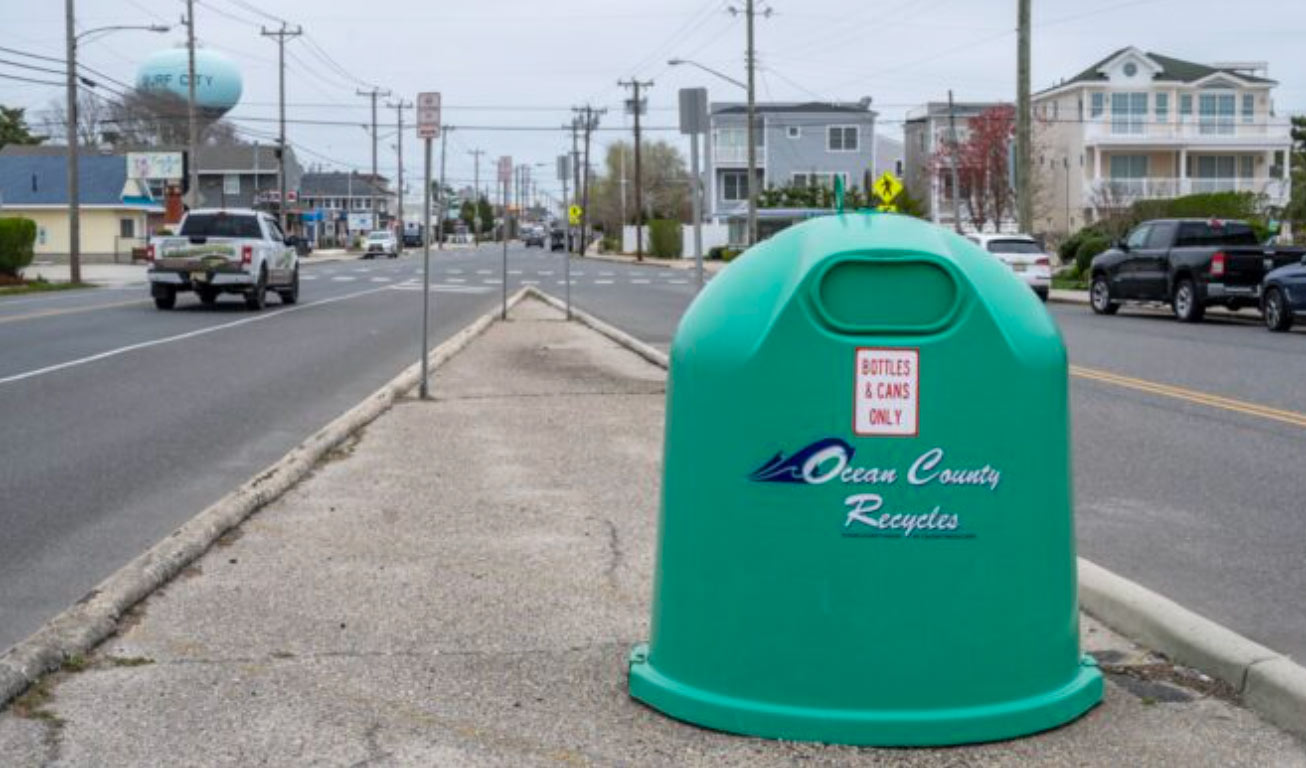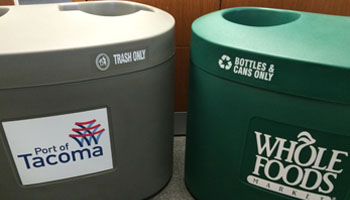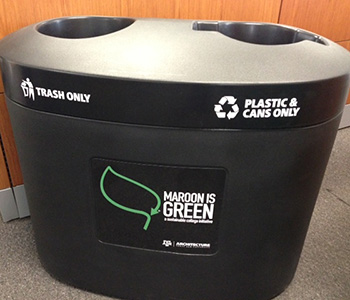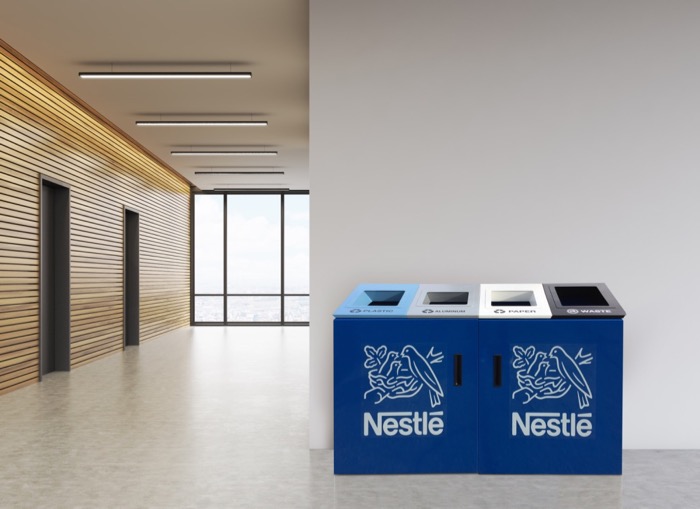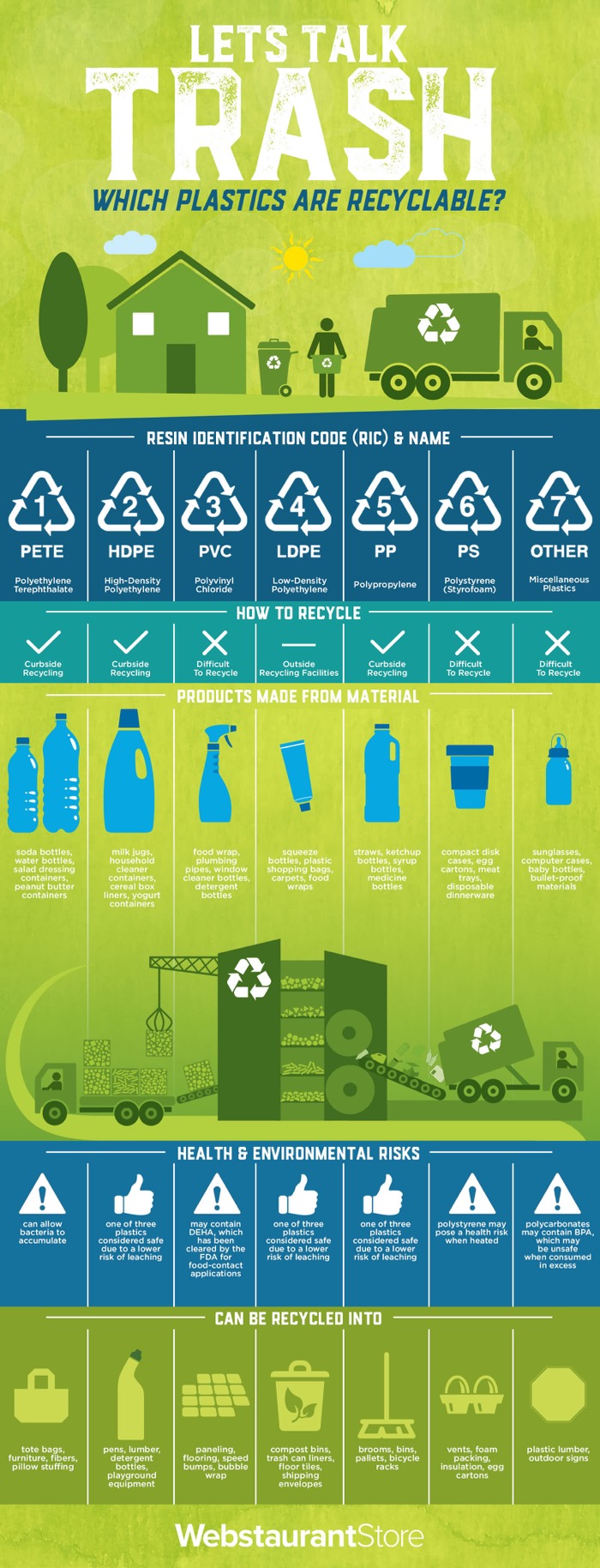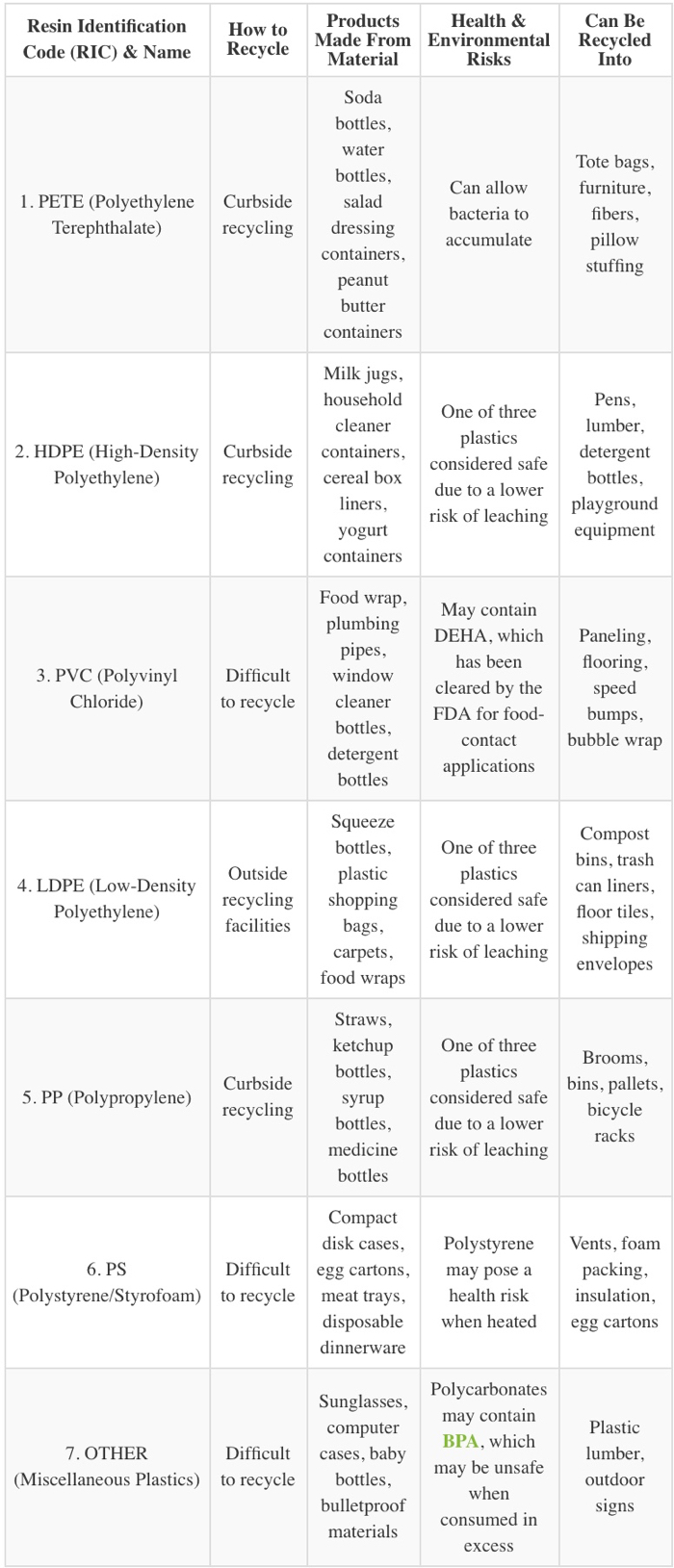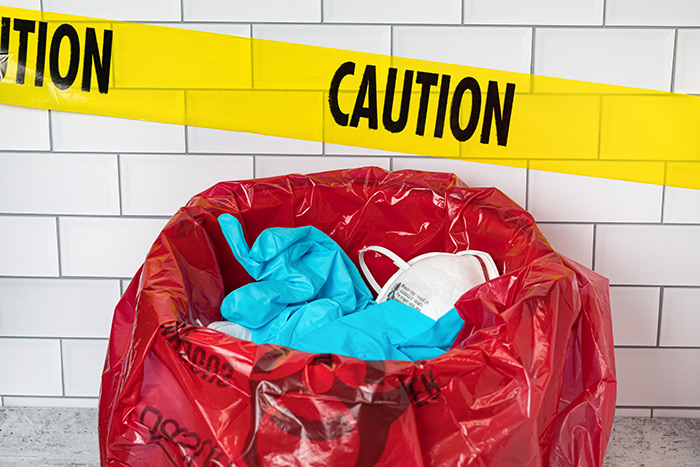
The Centers for Disease Control continues to recommend wearing gloves and masks while in public. More and more people are following recommended guidelines. However, getting rid of those personal protective equipment (PPE) items is often being done improperly. In this week's "Issues of the Environment," WEMU's David Fair talks with Washtenaw County Public Works manager Theo Eggermont about proper disposal to protect public health and the environment.

Overview
- Parking lots in southeast Michigan are littered with used personal protection equipment (PPEs). As the COVID-19 epidemic intensifies, tainted gloves, masks, and disinfectant wipes are creating a public health hazard. These items should be placed in a trash bin as soon as they are removed, and care should be taken to ensure they do not end up elsewhere in the community or contaminating the recycling stream.
- Disinfectant wipes and other wipes labeled “flushable” also need to be placed in the trash, never in the toilet. Wipes that are flushed into the sewer system can cause enormous clogs, hazardous sewage backups and overflows, and they are expensive to remedy.
- Governor Whitmer’s recent “Stay Home, Stay Safe” Executive Order to prevent the spread of COVID-19, has led to some changes in the collection of recycling and waste. However, curbside recycling continues. Unfortunately, the New Boston MRF (a processing facility that handles some of Washtenaw County’s recycling materials), has had to temporarily close after employees became ill with COVID-19, and other MRFs are operating below the usual capacity.
- Theo Eggermont, Public Works Manager for Washtenaw County, encourages Washtenaw County residents to continue their personal recycling efforts. The Hazardous Household Waste Collection at Zeeb Rd. and Collection Day events for hard to recycle items are cancelled until the “stay at home” order is lifted. Residents should continue to store difficult to recycle items until collection events can resume.
Gloves, Masks, and Wipes Everywhere
Last week, the Centers for Disease Control and Prevention recommended that Americans wear face masks to help prevent the spread of the novel coronavirus, reversing an earlier directive against it.
Now, people across the country say they’re finding used masks as well as gloves and disinfectant wipes littering store parking lots. Doctors say it’s not just annoying, it’s dangerous. Here’s why.
WHY IT’S DANGEROUS
Doctors say littering isn’t just a nuisance — PPE that hasn’t been properly disposed of can cause the coronavirus to spread more easily. “I would urge at this time it is not a good practice to leave litter around for other people to clean up,” Dr. Karen Landers, a medical officer with the Alabama Department of Public Health, told WBRC.
She explained that current guidelines do not require the use of gloves “because they create a false sense of security” and could easily spread the virus if not removed or discarded correctly, according to the outlet.
Isabel Valdez, a physician assistant at Baylor College of Medicine, sang a similar tune.
“We know these viruses can live in these surfaces anywhere between two hours to two days,” she told KPRC. She recommends wiping gloves down with hand sanitizer before tossing them.
HOW TO DISPOSE OF PPE SAFELY
So what is the right way to dispose of masks, gloves and disinfectant wipes? For one, put them in a trash can. “Make sure to find your nearest trashcan,” Betsy Stewart with Main Street Family Care told WBRC. “I know Walmart and most places have trashcans at the exit. Or grab an extra grocery sack and discard your gloves in there so you can carry them home to throw away.”
How to safely remove gloves
When removing your gloves, the CDC reminds users that the outside is contaminated and recommends using one gloved hand to grab the palm of the other glove and peel it off.
Hold that glove while you slide fingers on your un-gloved hand under the remaining glove at the wrist to peel it off. Throw them both in the trash. When you’re done, be sure to wash your hands with soap and water or use an alcohol-based sanitizer, the CDC says.
How to safely remove masks and respirators
Grab the bottom ties of your mask and then the ones at the top and remove the mask without touching the front, according to the CDC. Be sure not to touch your eyes, nose or mouth. Throw it away then thoroughly wash your hands with soap and water or use an alcohol-based sanitizer. If you’re using a cloth mask, you can wash it in your washing machine, the CDC says.
Don’t Flush Wipes!
They're convenient, sitting in a little container on top of the toilet tank. A nice little damp wipe to tidy up after answering the call of nature. But the small flushable wipes are causing headaches, wastewater officials say, because they are clogging sewer systems in metro Detroit and across the country.
The phenomenon, which local officials call ragging, means that screens and pumps in wastewater systems are getting clogged with flushable wipes that officials claim might be flushable, but are not biodegradable. The wipes are "wreaking havoc" with pumps in a long-term, temporary sewer bypass at the 15 Mile Road sewer interceptor that collapsed and caused a sinkhole that was discovered Dec. 24 in Fraser, Macomb County Public Works Commissioner Candice Miller said. She and other wastewater officials in metro Detroit are urging folks to flush only toilet paper — nothing else — down with the human waste. "We have really had an enormous problem with this bypass. First, we have to pump (sewage) up 60 feet and then pump it back down (into the underground sewer line). We are just burning our pumps out with all this ragging," Miller said. "This ragging is just really, really handicapping our efforts our there."
She said the wipes turn "into almost like a rope and they wrap themselves around the pump." She said officials were discussing whether they should install a cutter on the pump, an additional expense in the already $70-million to $75-million repair project. The large sewer line collapse condemned three houses and caused officials to urge more than 500,000 residents and tens of thousands of businesses to curb water use for months. "All it takes is a small thing to catch — the first one and then they pile on each other," he said about the wipes, adding: "They'll go down, but that doesn't mean they are flushable ... The whole point with toilet paper is it deteriorates."
Craig Covey, community liaison with Nash's office, said, "Wipes and similar products are costing our nation's water and sewer systems millions now, and the problems are in every system." Last year, Oakland County officials made a fun, two-minute public service announcement to educate people about not flushing wipes and other items — including cotton balls and kitty litter — down the toilet.
While the main system in Oakland County hasn't has many problems with non-flushable items getting caught in pump screens, which get cleaned regularly, or at its facilities, the ragging problem is often an issue in the sewer leads out of residences and neighborhoods into the main sewer lines, Nash said. "They block private lines, get caught up in tree roots or back up into people's homes," said Bryan Peckinpaugh, spokesman for the Detroit Water and Sewerage Department, adding that the wipes and other non-flushable debris can cause equipment in wastewater treatment facilities to be damaged.
In 2014, the department also made a short video that is on YouTube discussing the problem and the damage it can cause and items not to toss into toilets, including tampons, sanitary napkins and paper towels. Nash said the bulk of the problem is made up of the flushable wipes, "the other things can hold it together — like dental floss."
Officials said they have seen a lot of flushable wipes through the years. According to Euromonitor International, the sale of wipes, in general, continues to grow, reaching sales of $5.6 billion last year.
The Association of the Nonwoven Fabrics Industry (INDA) stated in an e-mail to the Free Press that it does not track sales numbers of flushable wipes. It stated it tracks other categories and that there are three categories that include materials marketed as "flushable" — moist toilet tissue, toddler training and intimate/feminine care wipes. The annual growth rate for these three categories from 2008 through 2013 was 4.8%, according to its e-mail.
Out of sight, out of mind. That's what many people think when they flush the toilet, with wastewater officials having seen everything from tissues to cigarette butts to prescription medication go down the john. A tour earlier this month of the Clintondale Pump Station in Clinton Township by a Free Press reporter included two large bins about a third full from just three days of debris collected by a 24-hour, seven-day-a-week automatic bar screening cleaning operation in the Lakeshore sewer interceptor — another large sewer interceptor that runs along I-94 on Macomb County's east side.
Among the items slowly pulled out of the sewage water were sludgy wipes and other paper items in shades of yellow, brown and black, a Sharpie — even a plastic water bottle. There are four bins that are filled with debris, which is taken to a landfill weekly by a sanitation hauler, though sometimes a special pickup is needed if a lot of items are collected.
Clogs created by wipes are a health hazard for workers
In the old days, officials there said, screens had to be cleaned by hand by workers with rakes. Cleaning of screens is being done manually at the sewer collapse in Fraser, where during a heavy rain at the end of last month, the screens had to be cleared of wipes and other debris every one to two hours instead of about every 18 hours on a non-rainy day, Miller said. The cleared material gets trashed.
"All kinds of things can get stuck down there," Nash said. "Every little thing adds up to what shouldn't be there. If it doesn't deteriorate right away, we really don't want it down there."
INDA stated it agrees with "concerns about the need to reduce the burden on wastewater systems." "And we’re committed to engaging with consumers and municipalities about how to make sure we find the right solutions. We believe that working together, we can raise the public awareness that will lead to real, lasting changes," INDA said in its response to e-mail questions from the Free Press. "It's an unfortunate truth — people flush products not designed to be flushed."
INDA said that forensic studies done in collaboration with wastewater professionals show "approximately 90% of the items being found at wastewater screens are not engineered to be flushed nor marketed to be flushed. The most frequently found items are paper towels/napkins, baby wipes, feminine hygiene products and household wipes. Only a small percentage of the debris analyzed in these studies were identified as a 'flushable wipe' and those were frequently there only as late comers to a pile-up."
INDA stated that flushable wipe products, by their design, manufacturing and performance are "entirely different from the many non-flushable wipes on the market. But that's not just taken at face value. Before they're determined to be safe to flush, products undergo seven rigorous tests — and must pass each one."
The association states that in the tests, flushable wipes passed through various systems, pipes and lines "not damaging pumps and ultimately degraded. They were proven to be compatible – not a burden – on wastewater systems. The fact is, more than 98% of items found in wastewater systems are items not meant to be flushed — everything from paper towels to non-flushable wipes to feminine hygiene products."
But several cities in Minnesota filed a class-action federal lawsuit in 2015 against a half-dozen companies that advertise certain wipes as flushable, according to media outlets in Minnesota. A TV station, KSTP-TV, reported in January that attorneys representing the companies were in the state to inspect clogs the cities claim are damaging the sewers. The association stated that flushing items not designed to be flushed is "not a problem that can be solved by focusing on one product, industry or company. There needs to be a strong effort to educate consumers on proper disposal paths for products, and that the toilet is not a trash can."
It stated that the amount of baby wipes and other non-flushable materials found in wastewater systems dropped "dramatically" following the industry's joint education campaign. "Clear, strong, easy to understand labeling is also a key factor in helping consumers understand what not to flush," the INDA response stated.
The association stated it collaborated with wastewater associations to create labeling and introduced the "Do Not Flush" symbol for non-flushable wipe products. It's a picture of a person tossing an item into a toilet with a slash through it, indicating not to flush that item. A Free Press reporter noticed such a symbol for the first time just a few months ago on a Kleenex tissue box. INDA states that manufacturers of flushable wipes are continually advancing technologies and practices for solutions for keeping water systems safe.
But for wastewater officials, the answer is easy — only flush toilet paper with human waste; throw everything else in the garbage.
Information Provided by Theo Eggermont, Public Works Manager for Washtenaw County
- Many communities in Washtenaw County and surrounding areas send their recyclables to GFL in New Boston. They had an employee test positive and have temporarily shut down, other MRF’s are operating at a below level capacity because they used to be able to have 4 people on the sorting line and now have to have 1 person in that same space. It would be important for people to know to still recycle and now more than ever to do it better. Check municipal websites for directions, for further guidance. Many communities in Washtenaw County sent their materials to WWRA, and that is still operating.
- County Clean up days to get rid of those things that many people have found the time to clean out their garages (bulky waste, cleaning supplies, electronics, tires, etc).
- Dates and items that can be recycled, or properly disposed of can be found at: https://www.washtenaw.org/2414/County-Clean-Up-Days
- We’ll be adding in others with events at Saline, Augusta, and EMU to be scheduled and adjusted based on state and local guidance on COVID.
- We are planning on adding some additional capacity/hours at our Zeeb Home Toxics Center when we return as we know people will still want to get rid of things.
Waste Collection during COVID-19, including recycling, is still operational in Washtenaw County
Recycle Ann Arbor - Update as of March 26th, 2020 - In light of Governor Whitmer’s recent “Stay Home, Stay Safe” Executive Order, we have decided to close the Recovery Yard (7891 Jackson Rd.) as of 4:00 pm on March 26th, 2020, until further notice. The Drop Off Station, Reuse Center and Main offices remain closed. We are working hard to support our staff and keep our community healthy and safe during this rapidly-changing and challenging time.
Recycling and waste services remain essential to our community and are expected to continue throughout the “Stay Home, Stay Safe” order. Recycling Curbside Collection will continue on your scheduled day. The Materials Recovery Facility (MRF) is still sorting materials, and our partners throughout the industry are still processing materials and marketing them to end markets. We have instituted precautions to keep our curbside recycling collection drivers and Materials Recovery Facility staff healthy & safe.
Curbside Recycling Collections
- Curbside Recycling Collection is occurring on your scheduled day.
- Recycle Ann Arbor team members will be cleaning and disinfecting common/communal areas in the Curbside Collections Division
- A cleaning and disinfecting station will be placed in a communal area for collection drivers to use in cleaning their collection vehicles.
- While performing pre-trip inspections, Recycle Ann Arbor Drivers are required to sanitize their trucks (outside inside door handles, seats, radio, steering wheel, dashboard, joysticks and accessories).
- All two-way radios will be disinfected after use.
- Staff are maintaining at least 6 feet of distance between themselves and others at all times.
- Staff who are sick are instructed to stay home for at least 14 days.
- Recycle Ann Arbor will be posting signage related to the precautions and spread of COVID-19 at primary point of entry and throughout buildings.
Materials Recovery Facility (MRF)
- The Materials Recovery Facility doors are closed to the public. The facility is still processing recyclables. Drivers and visitors are prohibited from entering the building.
- Please maintain 6 feet of space between yourself and others on site. Staff on site will also be practicing social distancing, and wearing proper protective gear to ensure maximum safety.
- Our staff will be following health & safety precautions to disinfect and sanitize the work space at regular intervals.
- New Boston MRF shut down due to employees becoming infected with the Covid virus - alternative options are being explored.
Recovery Yard
- Effective at 4 pm on March 26th, 2020: Recovery Yard is now CLOSED until further notice. We will alert you when we are able to reopen.
Drop-Off Station
- Drop Off Station is now CLOSED. We will alert you when we are able to reopen.
ReUse Center
In an effort to help prevent the spread of Covid-19, the Reuse Center is now CLOSED. We will alert you when we are able to reopen.
Source: wemu.org
